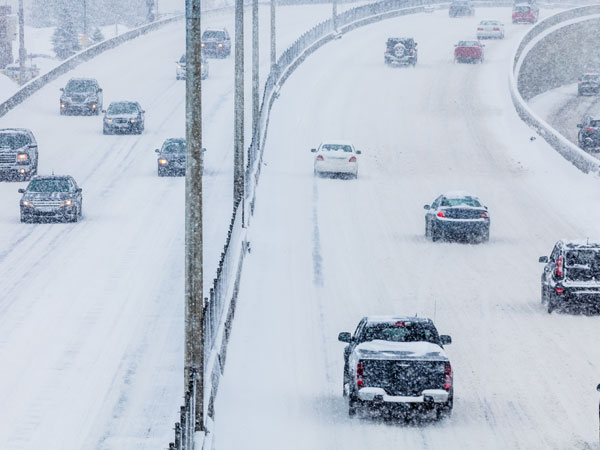In our northern latitudes the amount of snow, sleet and ice vary by season and geography. But by how much? A new study from VTT investigates the distribution of road conditions and road temperatures in Finland.
A study from VTT aimed to assess the distribution of road conditions and road surface temperatures in Finland as the number of kilometres driven, also known as vehicle kilometres travelled (VKT). The study addressed all public roads, including main roads, regional and connecting roads, and urban streets.

Fact-finding and estimation
A wide range of publicly available data sources from the Finnish Transport Infrastructure Agency (FTIA) and Statistics Finland was utilised in the study. The weather and road temperature data were acquired from Vaisala Oyj and merged with the publicly accessible sources.
The road network in Finland is divided into classes. The main roads (classes I and II) comprise the most important network, which includes motorways and highways connecting cities and municipalities. These roads, while only a fraction of the length of the network, nevertheless represent 48% of the kilometres driven in the country. A collection of smaller roads, the regional and connecting roads, serve within-municipality traffic and form links between the municipalities and main roads. They represent about a quarter of the kilometres driven, while the urban street networks, which are owned and maintained by municipalities, make up the rest.
The distribution of road conditions was estimated for the main roads using road surface sensor data from all the major regions (according to the NUTS3 classification). Since data was not available for the regional and connecting roads and urban street networks, their estimate was formulated by consultation from road weather experts for significant changes between the road types.
Cold but not always snowy
For an average year, the most prevalent road condition on Finnish roads is a dry road surface with 56% of kilometres driven. It is followed by wet and moist surfaces with 29% of kilometres driven. But it comes as no surprise to northerners that wintery conditions such as snow, ice and sleet still account for a large presence overall (12%), and especially during winter months (38%). Indeed, the warmer southern regions, which have the largest population density, catch the most traffic, as do the well-kept main roads, which helps explain prevalence of the dry condition. In contrast, 26% of vehicle kilometres are driven on surfaces below zero degrees Celsius, meaning that even if the road surfaces are classed as “dry”, they might still be frozen.
The distribution of conditions and temperatures is influenced both by time of the year and geography, with winters being at least partially snowy in the whole country and much colder and snowier in the north. In the report the results are categorised according to region and time-of-the-year.
Read more:
Teemu Itkonen, Johannes Mesimäki & Satu Innamaa (2022): Distribution of road conditions and road temperatures in Finland as kilometres driven. VTT Research report VTT-R-00072-22.
Contact:

Teemu Itkonen
teemu.itkonen@vtt.fi
VTT, Technical Research Centre of Finland Ltd., Finland






Follow us: